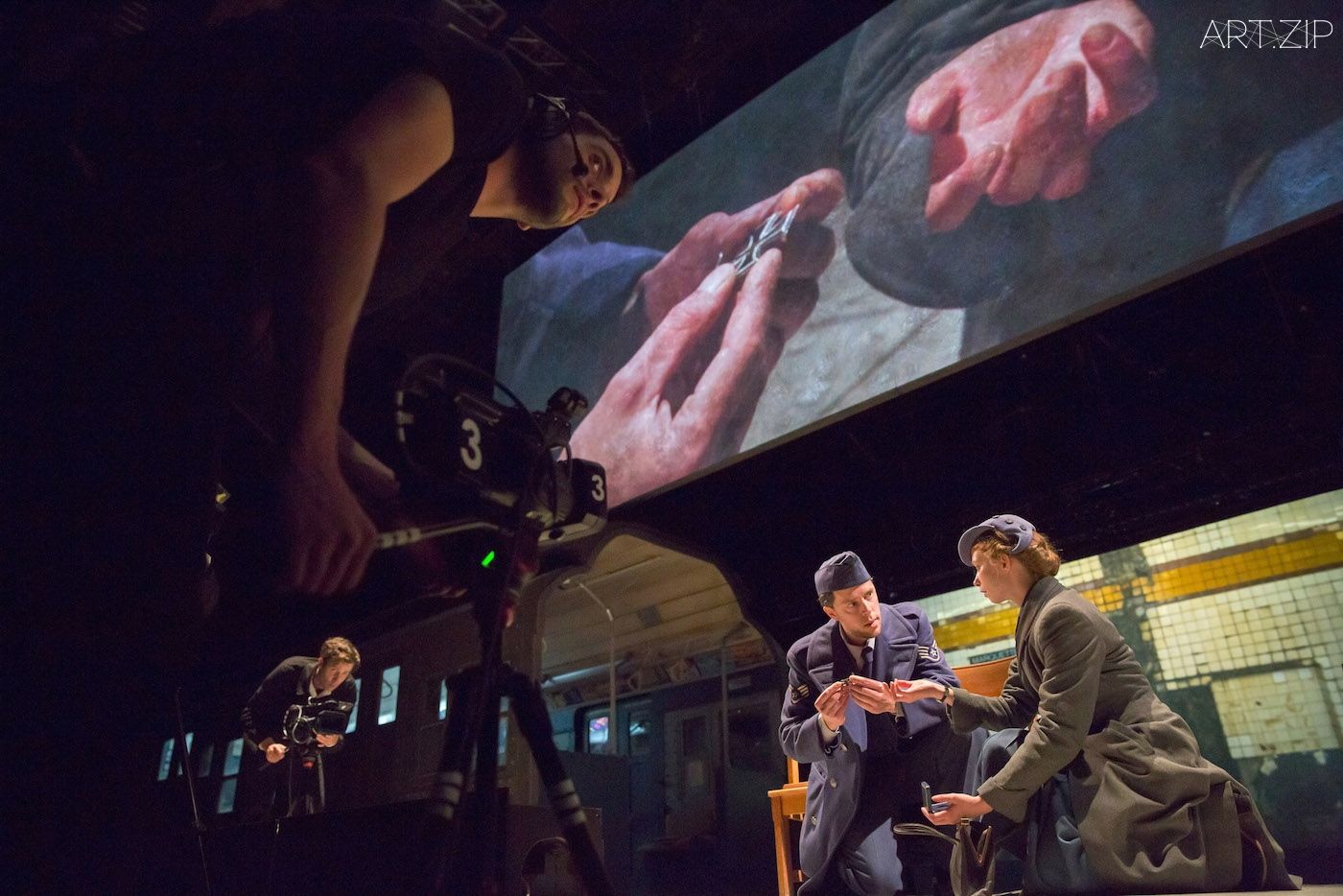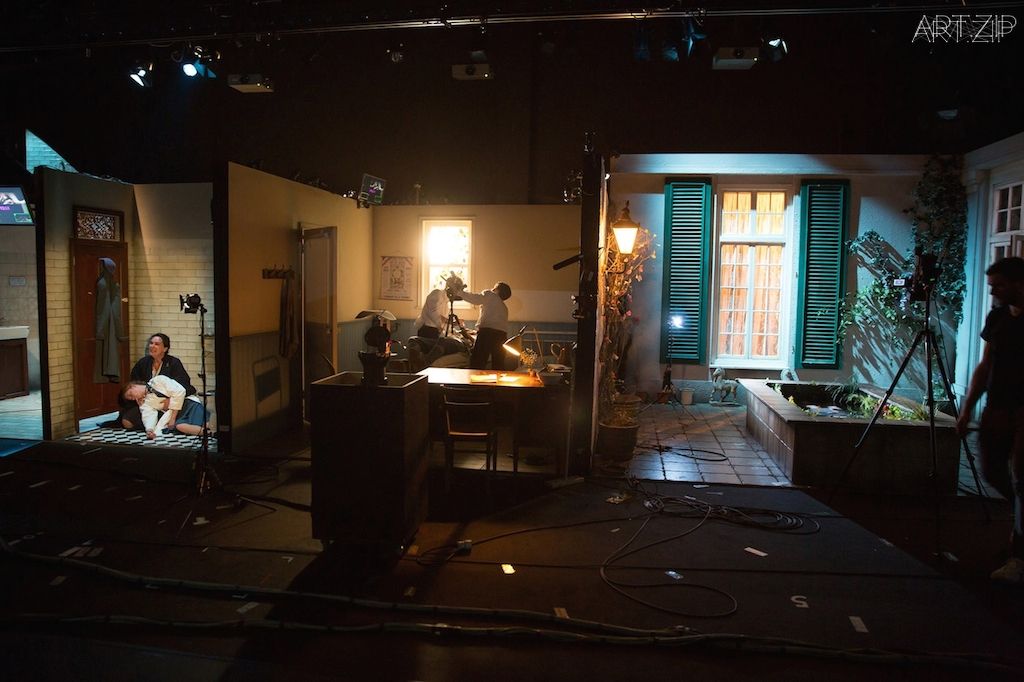
Text by: Struan Robinson / 撰文:Struan Robinson
Translated by: Peng Zuqiang / 翻譯:彭祖強
The marriage between the live action of stage and the smooth cinematic experience of screen is central to Katie Mitchell’s most recent work, Forbidden Zone. Emphasis upon the visual is a recurrent theme throughout her plays; from the illustrative projections in Some Trace of Her to the striking image of two actors powering the lights of the auditorium with exercise bikes in Lungs. Her work is something of a hybrid, a cross between stage and video – what Mitchell calls “live cinema”.
Talking about the 2007 adaptation of Women of Troy, critic Jane Edwards notes that Mitchell’s work is characteristically “more visual than other directors” – her belief is that plays are about making sense of human behaviour, and that images can speak volumes about a character just as much as words. The delivery of such multi-media productions requires pre-planning: recording segments of film, finding, capturing and creating images to “crystallise the characters feelings and thoughts”. Ben Whishaw, who worked with Mitchell on Some Trace of Her, explains that “images are so eloquent”, they are snapshot of human behaviour, an effective way of theatrical communication.
However, the frequent use of video imagery has regularly drawn criticism with some reviewers claiming that Mitchell “imposes her trademark style regardless [of whether it is artistically necessary or appropriate to the text”. Michael Billington, Theatre critic for the Guardian, asks whether or not the narrative of Virginia Woolf’s Waves was “enhanced by the sight of an actor fluttering a fan in a bowl of water” or distracted from. That’s not to say that Mitchell’s style is not appreciated: it is, only further a field in Germany. Her most recent production is a German-English bilingual tragedy about Fritz Haber, the inventor of the very first chemical weapons during the First World War, and the effect that it had on his family over three generations. With multiple narratives crossing two time zones, Mitchell has collaborated with multi-media production company 59 Productions to deliver a complex storyline with a seamless, cinematic-quality film is shot in real-time on stage in front of a theatre audience interweaved with the text.
對現場表演和熒幕觀影體驗的結合,在凱蒂·米切爾(Katie Mitchel)的近作《禁區(Forbidden Zone)》中尤其重要。在她的戲劇中,對視覺元素的強調是一個常規主題:從《她的軌跡(Some Trace of Her)》中的描述性投影,到《肺(Lungs)》中兩個演員使用動感單車給大廳的燈光充電。她的作品是舞臺和錄像的結合──用她自己的話說,就是”現場影院(Live Cinema)”
評論家簡·愛德華茲(Jane Edwards)在對米切爾2007年的改編作品《特洛伊女子(Women of Troy)》的評論中,留意到米切爾的作品”比其它很多導演的作品要更為視覺化。”她一直堅持戲劇是有關於探索人的行為,而圖像的敘事性和文字一樣強大。而這種多媒體制作的呈現則需要不少的提前計劃:對電影片段的錄音、搜集、捕捉以及制作”凝聚角色情感與思考”的圖像。與米切爾在《她的軌跡》中合作過的本·衛肖(Ben Whishaw)就認為”圖像永遠是意味深長的”,它們是人類行為的片段,同樣也是一個完成戲劇溝通的有效途徑。
然而,對影像的頻繁使用,也使米切爾招來了質疑,一些評論家認為米切爾”在不顧是否符合藝術需要,或是否切合戲劇內容的情況下,一律使用其標誌性的風格。”英國《衛報》的戲劇評論家邁克爾·林頓(Michael Billington)則質疑她的作品,如弗吉尼亞·伍爾夫(Virginia Woolf)作品《浪(Waves)》的劇情中,”演員在一碗水中扇風”的橋段到底是促進了還是消解了作品的表現。但這也並不是說無人欣賞米切爾的風格,在德國,她的最新創作是一個德英雙語劇目,一場關於弗里茨·哈伯 (Fritz Haber)的悲劇。哈伯是一戰中化學武器的發明人,劇目也涉及到了這對他的家庭三代人造成的影響。在不同時空的多線條敘事框架裡,米切爾與多媒體公司59製作公司(59 Productions)合作,創作出了一個天衣無縫的複雜故事線,實時拍攝的影院品質的高清影像和文本交織融匯,共同呈現在觀眾的面前。



